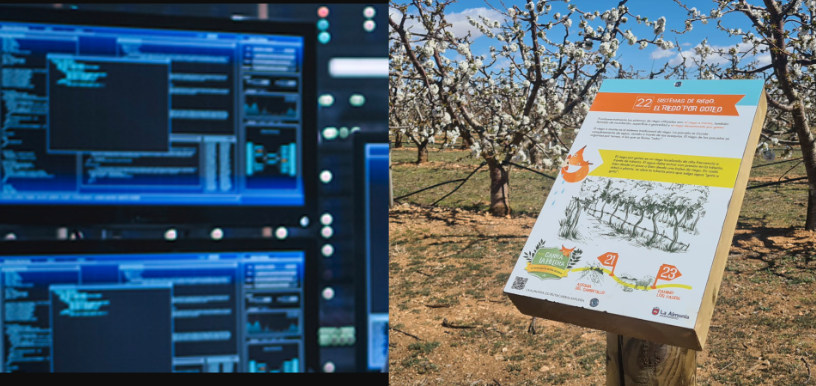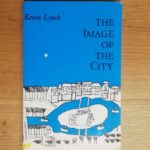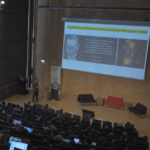Megacities like Paris, London and New York capture smart city headlines in recent years, mainly because they are centers of economic, technological and innovative power. While small communities and smart villages in peripheral areas receive less attention, they offer value through innovation in biodiversity, climate resilience, environmental protection, agritech, logistics, tourism, and remote work opportunities.
Smart villages in Europe build on local strengths and policies to develop sustainability and resilience. They rely on participatory governance to create citizen-centric strategies and improve socioeconomic conditions. This article, the second in a series on peripheral communities, reviews three small towns — in Spain, Austria and the Czech Republic — and highlights their strengths as smart villages.
La Almunia, Spain
One of these smart villages is La Almunia. With an estimated population of 8,000 inhabitants, it is located 50 kilometers from the smart city of Zaragoza. In contrast to many small communities which suffered depopulation, La Almunia continues to grow, achieving an average annual growth rate of more than 2% for the past 20 years. According to Mayor Marta Gracia, the town’s growth and economic development are a result of two main factors: the Escuela Politécnica Universitaria de la Almunia (EUPLA) and the modernization of local agriculture.
EUPLA is a municipally owned engineering school attached to the University of Zaragoza. For more than 50 years, EUPLA has trained students in branches of engineering and technology. Today, the curriculum includes mechatronics, data engineering, industrial organization, civil engineering, architecture and agricultural engineering. The presence of up to 3,000 students and professional educators in La Almunia inevitably transformed the local society, economy and agricultural sector.
La Almunia specializes in fruit growing, and Gracia says local success in agriculture is based on innovative irrigation methods and technical strengths in production and exports. “Our agricultural sector generates a great demand for labor and facilitates the development of an important service sector and auxiliary industry. This means our economy is quite diversified, because there is no large, dominant company.”
Many of the foreigners who came to work in La Almunia’s fruit collection season settled in the town, and a significant number of these new residents (representing about one-third of the population) changed to permanent and better paying jobs in hotels, services, transport and industry.
Based on La Almunia’s technology ecosystem, it was an easy decision for the city council to present its candidacy to Innpulso, Spain’s Network of Science and Innovation Cities, which selected the village as a ‘City of Science and Innovation’. EUPLA and its projects were essential in earning this distinction — in particular the Digital Valley 4.0 project, which aims to extend IoT tools to the agricultural sector in La Almunia and neighboring towns.
By collaborating with Aragon’s agricultural cooperative Cosanse (located in La Almunia), Gracia says “we intend to install a network of sensors on farms connected by LoRa technology with a supercomputer at EUPLA. Local farmers will benefit from this network through instantaneous data collection and subsequent analytics provided by EUPLA — yielding new research and applications in pest prevention, agricultural insurance, and autonomous farming technologies.
As a City of Science and Innovation, La Almunia received a subsidy from the Spanish government to hire an innovation agent. This role is required “to deepen innovation projects, business revitalization, and our urban agenda,” says Gracia. The La Almunia city council “has already managed to capture a significant volume of European next generation funds on its own, but without specialized personnel, it is not possible to consider more complex projects.”
Initial tasks of the innovation agent are to coordinate and promote the first Energy Community with municipal participation in La Almunia, and to collaborate in the development of Efficiency and Energy Rehabilitation at Neighborhood Level, (ERRP) for which the village receives European funding. This allows La Almunia to participate in a series of initiatives transferred from Innpulso. Gracia explains: “We need collaborative networking — and learning from other municipalities — to promote sustainable and balanced growth.”
Collaboration between EUPLA and the Aragon Institute of Technology (ITAINNOVA) should open more windows of opportunity for La Almunia. “We want to extend the collaboration with ITAINNOVA to local companies, and this is another area where it is important to have the innovation agent.”
La Almunia’s smart village story demonstrates how a small community can develop economic and technical strengths through a visionary strategy, innovation and collaboration.
Pöllau, Austria
Taking a virtual stroll through Austria’s Nature Park Pöllau Valley to appreciate its natural beauty and hirschbirne pear trees reveals signs of how this small community became a smart village through its commitment to sustainable agriculture and a healthy environment. The name “hirschbirne” is derived from the German word for autumn, denoting the late ripening season of the pears. Although once endangered, the hirschbirne trees enjoyed a renaissance in the Pöllau Valley, and the pears are now the leading agricultural product in the region.
With an estimated population of 6,000 residents, the municipality of Pöllau is 60 kilometers from the smart city of Graz, the capital of Styria — a region known as the “Green Heart of Austria” with abundant forests, alluring vineyards, and excursions for hiking, spas, photography and cultural events.
The Pöllau region’s agriculture and forestry is shaped by topography. While the western slopes of the Pöllauer valley are mostly wooded, the valley floor and inclines are used for agriculture. More than 170 agricultural and forestry businesses in Pöllau are operated as a main occupation and another 220 as part-time employment. An estimated 48% of the village is used for forestry. “Proper planting provides protection from wind and snowdrifts, and the forest has a positive effect on the microclimate, water balance” and recreational features.
Farmers engaged in fruit and wine growing make a vital contribution to the area’s biodiversity. Pöllau’s commitment to protecting biodiversity is based on local awareness that “biodiversity is a prerequisite for nutrition, health and well-being … and the availability of renewable raw materials.”
Pöllau and more than 70 other Austrian municipalities cooperate in KLAR — a climate change adaptation program funded by the Austrian Climate and Energy Fund. The program offers a process-oriented method for local authorities to raise awareness of climate change and implement adaptation actions. For Pöllau, participation in KLAR contributes to biodiversity protection, water supply options, climate-friendly construction, and flood control.
The village center, with buildings of historical importance and a listed town hall, is a source of local pride. However, property development is gradually displacing historical structures and reducing the center’s appeal as a place to live and work. To revitalize the village center, local authorities rely on a citizen participation process known as “LA21” — combined with support from leading architects and the Institute for Urban Design at the Graz University of Technology.
On the municipal website, residents can register for an online newsletter and find information on emergency services, climate change, environmental conditions, public services, e-charging stations, cultural events, employment opportunities and the public library. An annual library ticket allows access to digital media on the DigiBib-Styria platform with more than 50,000 e-books, audio books, videos and magazines.
Mukařov, Czech Republic
With a population of about 2,500 citizens, Mukařov is within commuting distance of the smart city of Prague. The municipality consists of three formerly independent villages with diverse assets and skills: Srbín (an agricultural village with recent construction of affordable housing), Žernovka (known for granite quarries and stonemasonry), and Mukařov-Buda (a rural center “at the crossroads of traditional trading routes” with a medical center, school and shops).
Mukařov boasts a healthy economy, low unemployment rate, natural resources, modern services and a growing population. Similar to other small towns near Prague, Mukařov must cope with challenges resulting from migration of urban residents in search of higher quality housing and a better environment. This migration causes a surge in demand for public services, transport solutions, housing and civic amenities in a village with limited resources.
In spite of resource limitations, Mukařov took initial steps in 2019 toward becoming a smart village by launching a new municipal website and an incentive-based system for waste management. Mukařov was one of 21 municipalities selected from 960 applicants to participate in Europe’s initial Preparatory Action on Smart Rural Areas and its flagship project Smart Rural 21 — designed to inspire villages to develop smart strategies. The project roadmap delivered guidance on designing a strategy, engaging with stakeholders, and creating and financing new solutions.
Public engagement was a key element in Mukařov’s strategy development, and information on the strategy was shared through a local newsletter, social media channels and municipal website updates. The main objectives of Mukařov’s smart village strategy are to improve the efficiency of governance processes, increase digital participation, reduce the commuting of local inhabitants, and ensure a responsible approach to the environment.
To increase digital participation, Mukařov provides:
- Government transparency with an online municipal budget
- Citizen-centric newsletter accessible via email and text messages
- Payment gateway for local fees
- Municipal library e-services (online catalogue, online lending services, e-books)
Another smart action in Mukařov was to engage with teenagers and find ways to create safe, appealing spaces for their needs — combined with an educational program aimed at the creative use of digital technology.
Based on its smart village strategy and development, Mukařov is poised to integrate newcomers into the community and address challenges such as improving transport connectivity, boosting digital skills, and supporting the local circular economy.
Unique strategies and bold commitments
While each of these smart villages is unique in terms of local projects and innovation, they exhibit similarities in terms of their commitment to engaging with citizens, participating in knowledge sharing projects, preserving community values, and improving the quality of village life.
This article is published under a Creative Commons license. Some rights reserved.
Photo courtesy of EUPLA / La Almunia de Doña Godina City Hall









